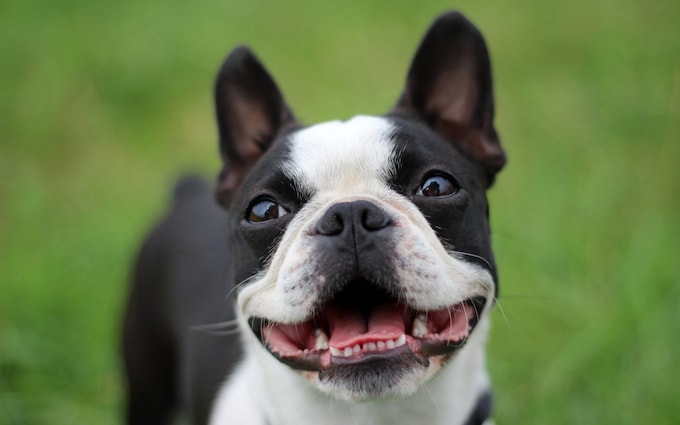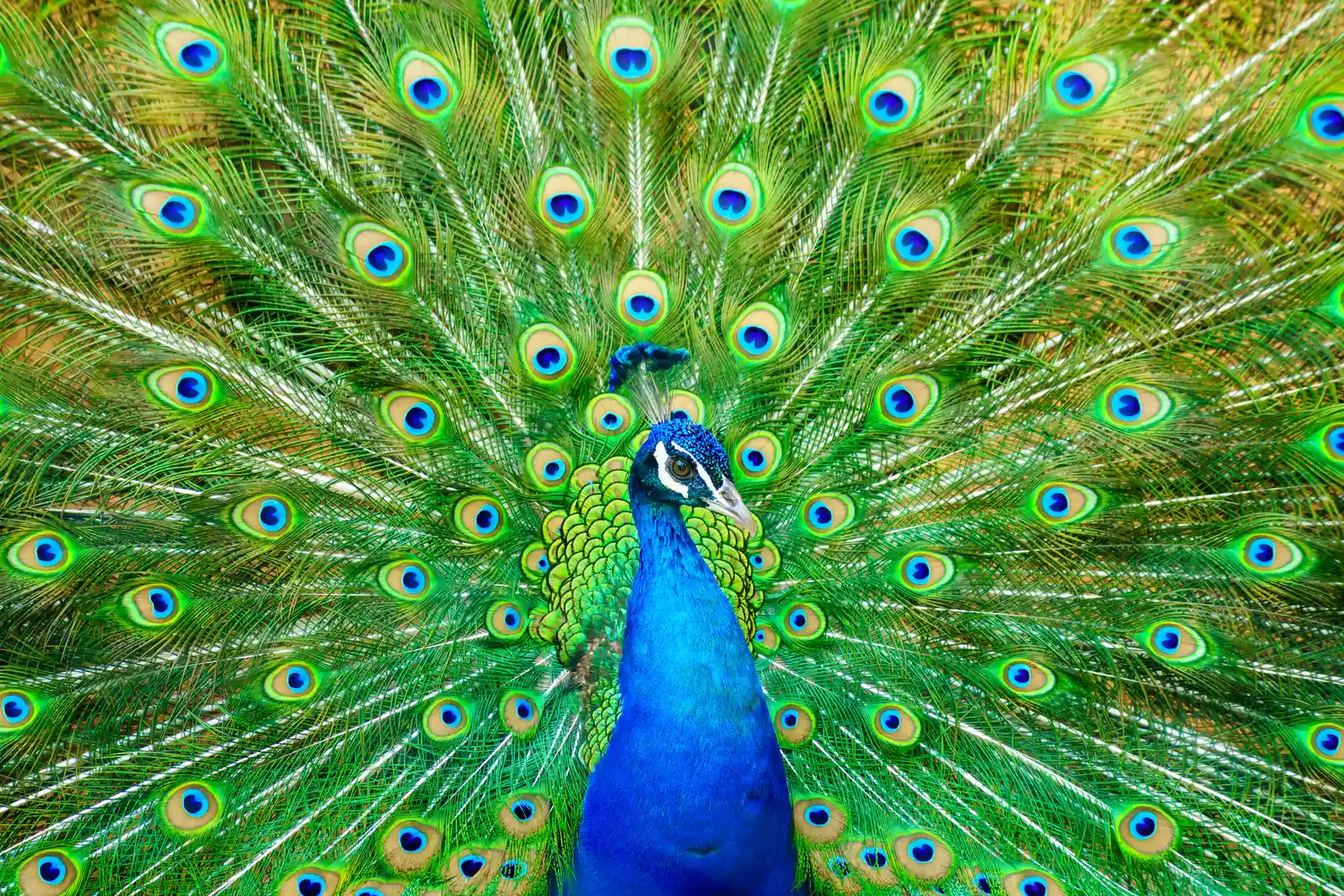
Though you can find peacocks fanning their fancy plumage in parks, farms, and zoos all over the world, these birds are native to Asia. They originated in India, where they are symbols of the Hindu religion and Indian royalty. Elsewhere, people admire them primarily because of their ornamental blue and green tail feathers. Less admirable is their high-pitched “honking” vocalizations.
From fashionable feathers to their history as luxury meat, here are 11 facts about peacocks you probably didn’t know.
Fast Facts
- Common Name: Indian peafowl
- Scientific Name: Pavo cristatus
- Average Lifespan in the Wild: 10 to 25 years
- Average Lifespan in Captivity: 10 to 25 years
- IUCN Red List Status: Least concern
- Current Population: Unknown
1. The Peacocks You Know Are Male
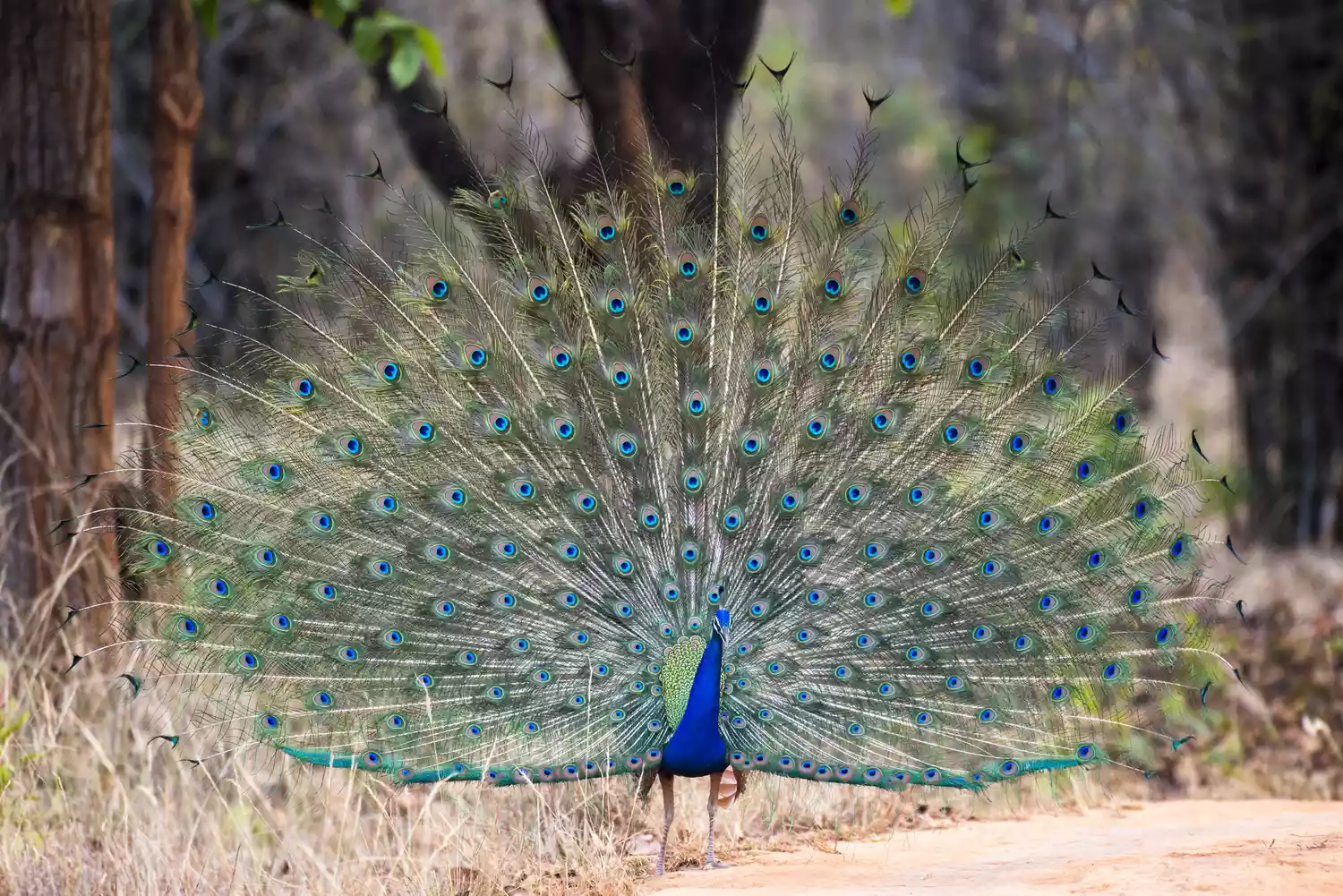
Like other bird species exhibiting sexual dimorphism, only the male peafowls have eye-catching colors and lovely decorative tail feathers. The females are beautiful but feature subtler colors like gray and brown, not blue. Females do not fan out their feathers in the way we know a peacock to do because this behavior, called “train rattling,” is exhibited only by males trying to woo a potential mate.
And even though both sexes are colloquially called by the same name, the word “peacock” refers to the male and “peahen” to the female. A group of peafowl is called a bevy, an ostentation, or a muster.
2. Peacocks Take Years to Develop Colorful Tail Feathers
When they hatch and for months afterward, male and female peachicks look identical. Males don’t start to develop color until they are about three months old, and it’s not until full maturity at three years old that their famous tail feathers become brilliant. In fact, the peacock’s tail aesthetics are what will get it a mate.
At the end of every mating season, a peacock will undergo a molting process in which it will naturally shed its feathers and regrow them longer and fuller ahead of the following mating season. The animals reach peak vibrancy around age six.
3. They’re the National Bird of India
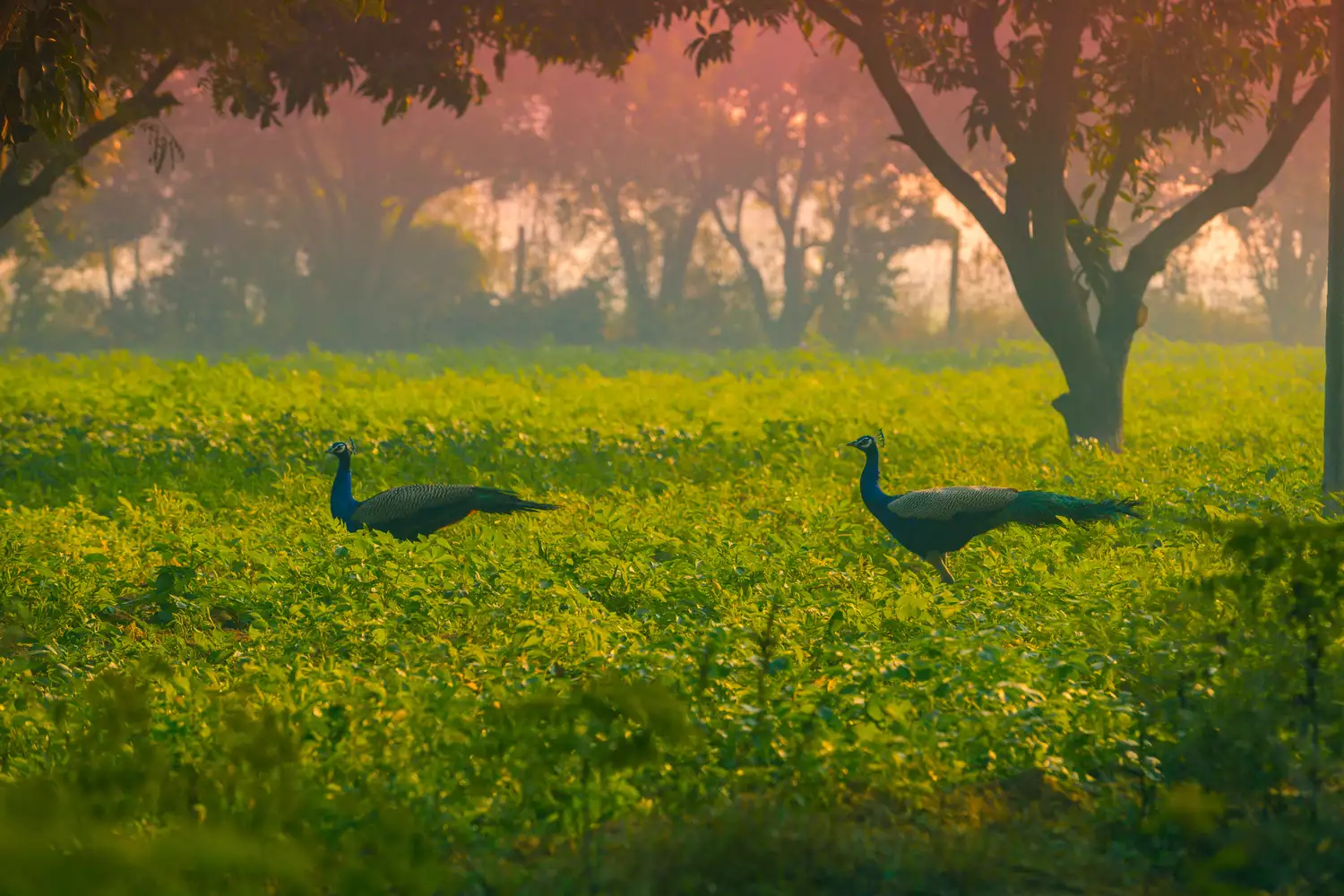
In 1963, the blue or Indian peacock (Pavo cristatus) was designated India’s national bird. According to the IUCN, its range covers nearly the entire Indian subcontinent, where it is a species of least concern.1
The peacock has a rich tradition of depiction in Indian art and Hindu religious culture. It is associated with gods and goddesses as well as royalty. For example, people believe the Hindu god Lord Krishna wears a peacock feather in his crown.
4. Peahens Are Picky When Choosing a Mate
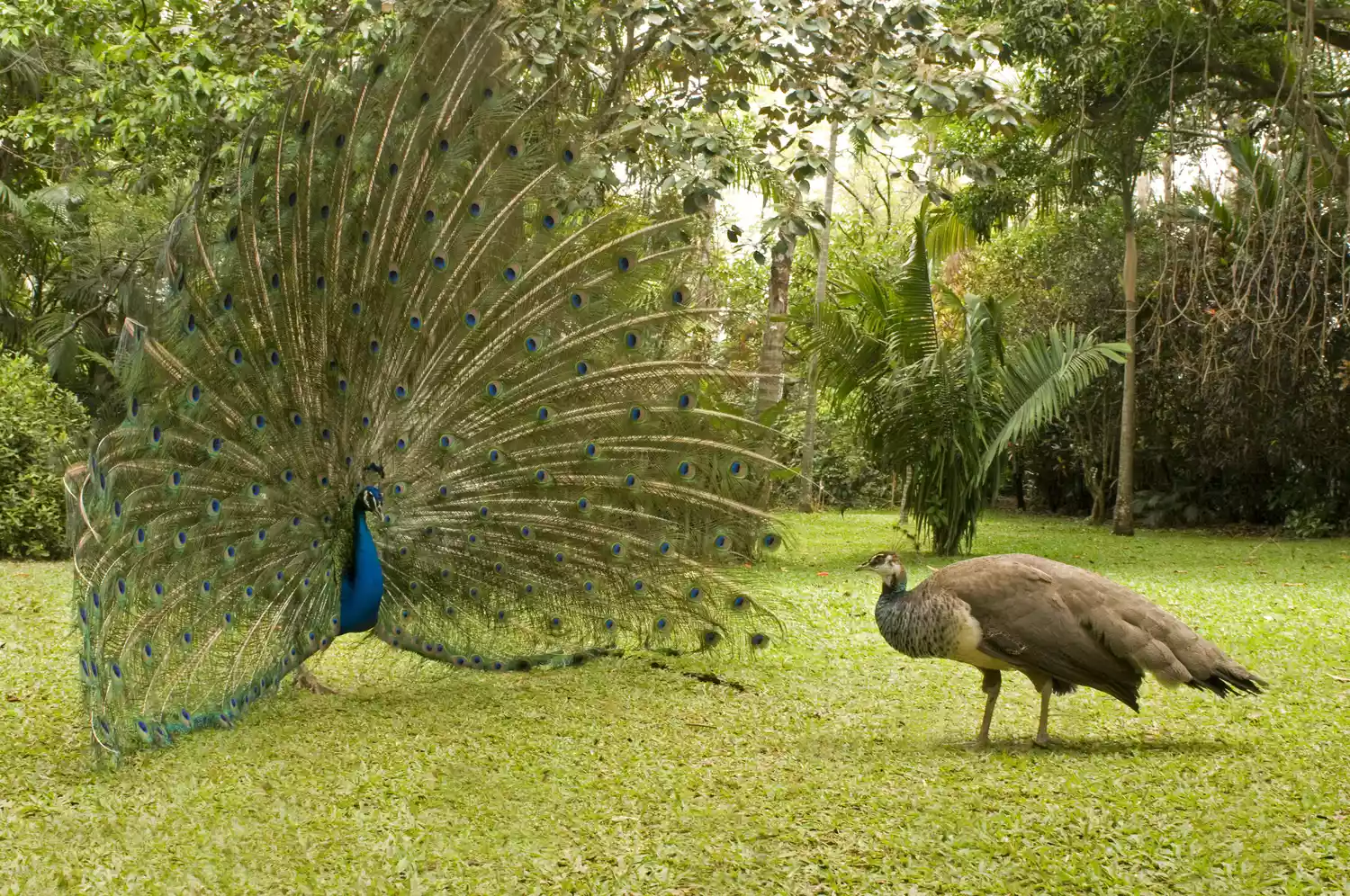
Peahens judge males’ fitness by their visual display, during which subtle rattling creates an illusion of spots hovering over a glimmering background. Some scientists theorize that the females find the male feathers appealing because they look like blueberries. Others think it’s because the colorful display can help protect them from predators.2
Research on peahen behavior has found that the angle of the peacock’s tail feathers might be even more important than the size of the display.3 There’s also evidence that vibrations, dancing (feather-shaking and moving), and vocalizations are important in mate choice.
5. Their Crests Are Actually Important Sensors
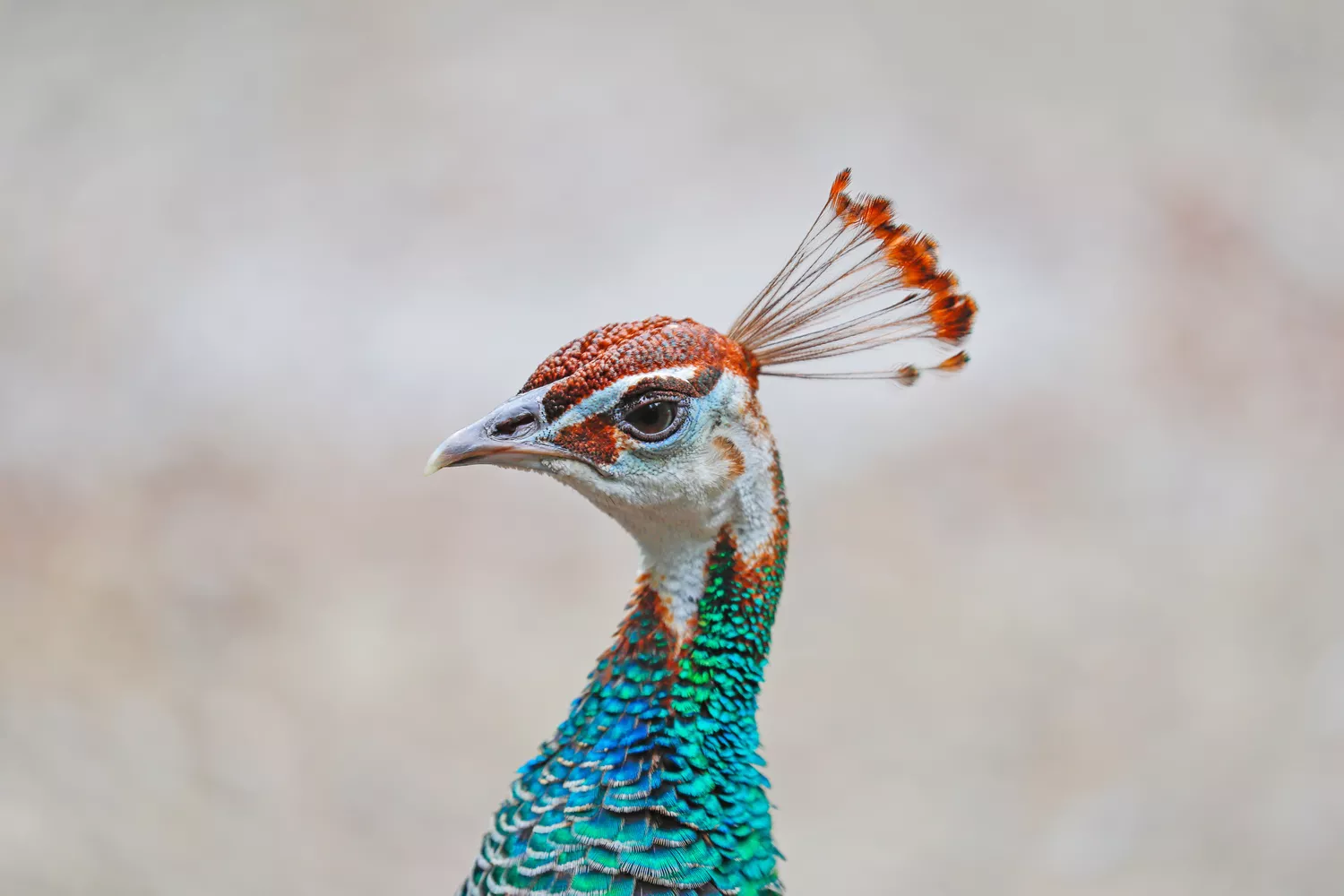
With their mesmerizing plumage, peacocks have so much going on that their crests, resembling floating crowns, are often overlooked. Peafowl crests serve an essential purpose in mating. Both males and females have these long feathers, but they’re more than decorative for peahens, whose crests act as sensors.
When male peacocks rattle their tails (scientists have measured it at about 25 times per second) to attract females, the female sees the display and feels it in her crest.4
6. Peacocks Have Been Symbolic Throughout History
In addition to their status as the national bird of India, peacocks have also played roles in Greek mythology, where they were a symbol of immortality. Ashkenazi Jewish people see golden peacocks as symbols of creativity (their feathers are connected to the idea of inspiration for writers).
Early Christian mosaics and paintings often depict peacocks, as people thought the “eyes” on their tail feathers represented the all-seeing God or the Church. In ancient Persia, people associated peacocks with the Tree of Life.
7. They Were Once Food for the Wealthy
In Medieval times, exotic animals appeared on the tables of the wealthy as a sign of riches. Recipes from that time describe how to prepare peacocks for a feast, which was tricky. Skin was removed with feathers intact so the peacock could be cooked and flavored, and then the skin would be reattached for a striking visual display prior to eating.
According to the English and Australian Cookery Book, “No ordinary cook can place a peacock on the table properly. This ceremony was reserved, in the times of chivalry, for the lady most distinguished for her beauty. She carried it, amidst inspiring music, and placed it, at the commencement of the banquet, before the master of the house.”5
Apparently, peacocks don’t taste like chicken, though. Records indicate that most people found them tough and not very flavorful.
8. Peahens Default to Male Characteristics With Age
Some elderly peahens may grow peacock feathers and make male calls. According to research on peafowl sex inversion, when peahens age, those with damaged or aged ovaries stop producing as much estrogen and they start to look and sound like males. The reason for this peculiar phenomenon? Male characteristics are the default development for the animal.6 Peahens are plainer looking only because hormones repress their plumage.
9. Peacocks Can Be Fully White
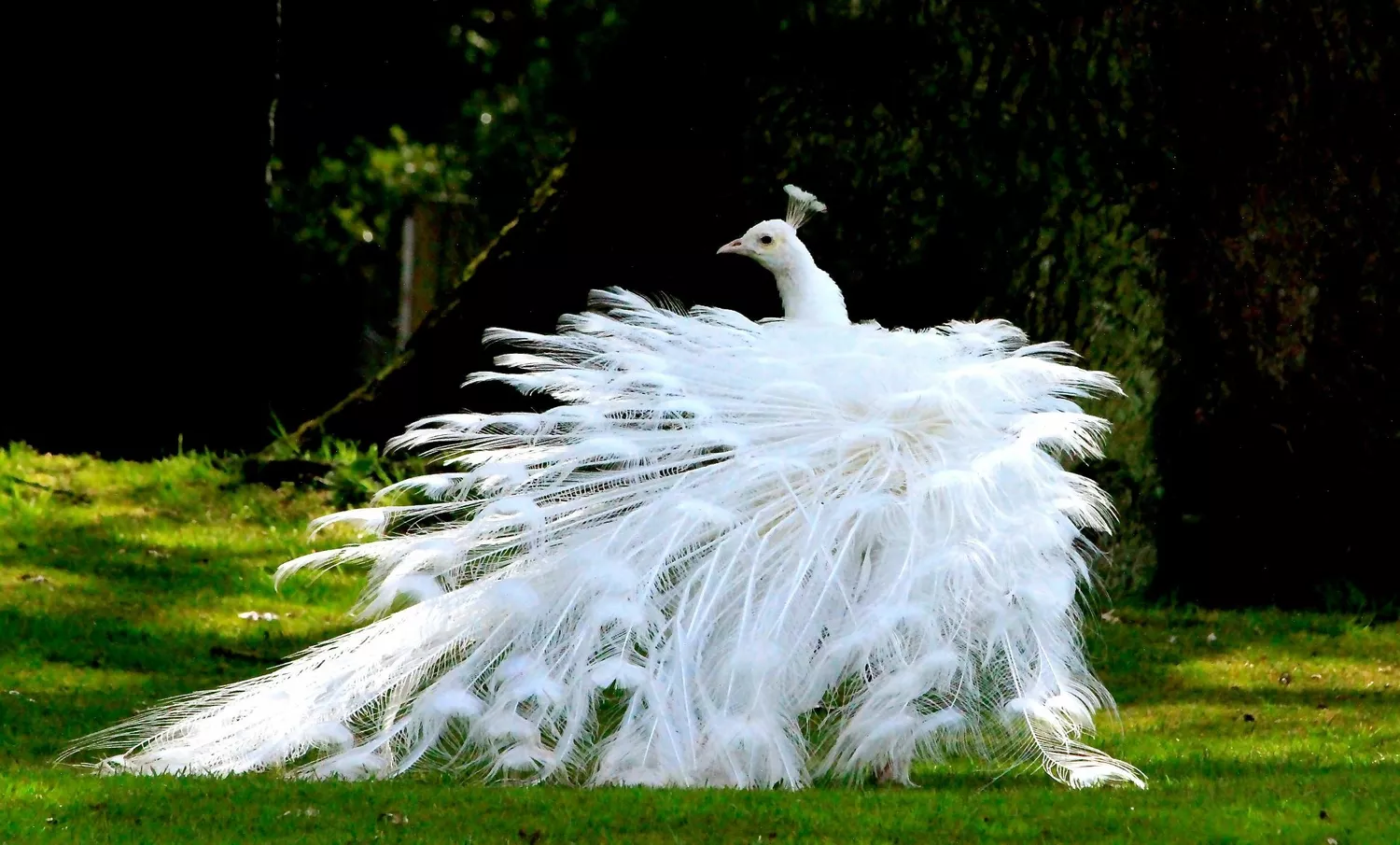
Snow-white peacocks are a little more common than they used to be since the trait can be achieved by selective breeding. Unlike albinism, though, which usually includes loss of pigmentation from feathers and eyes (resulting in red eyes), leucism is the genetic condition that results only in the loss of pigment from feathers. This is the case for white peafowls, which occur very rarely in nature.
10. Peacocks Can Fly
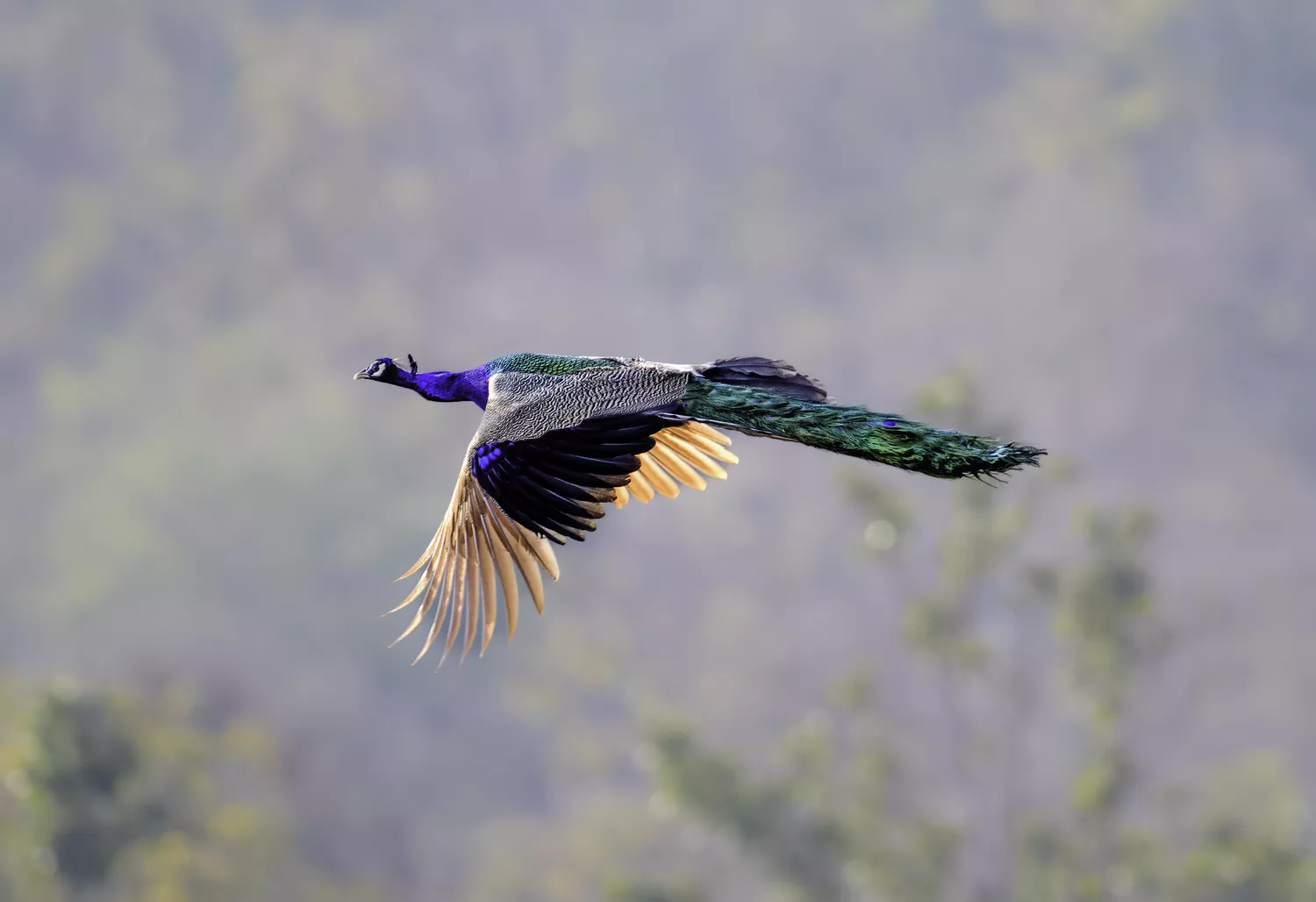
Even though their tail feathers are long and heavy when folded up out of fan position, peacocks regularly fly short distances in order to escape to a tree branch for protection from predators or to nest at night. Interestingly, when scientists compared how far peacocks flew both before and after molting (when they naturally lose their feathers), not much of a difference was noted.7
11. Some Have Subtler Tail Displays
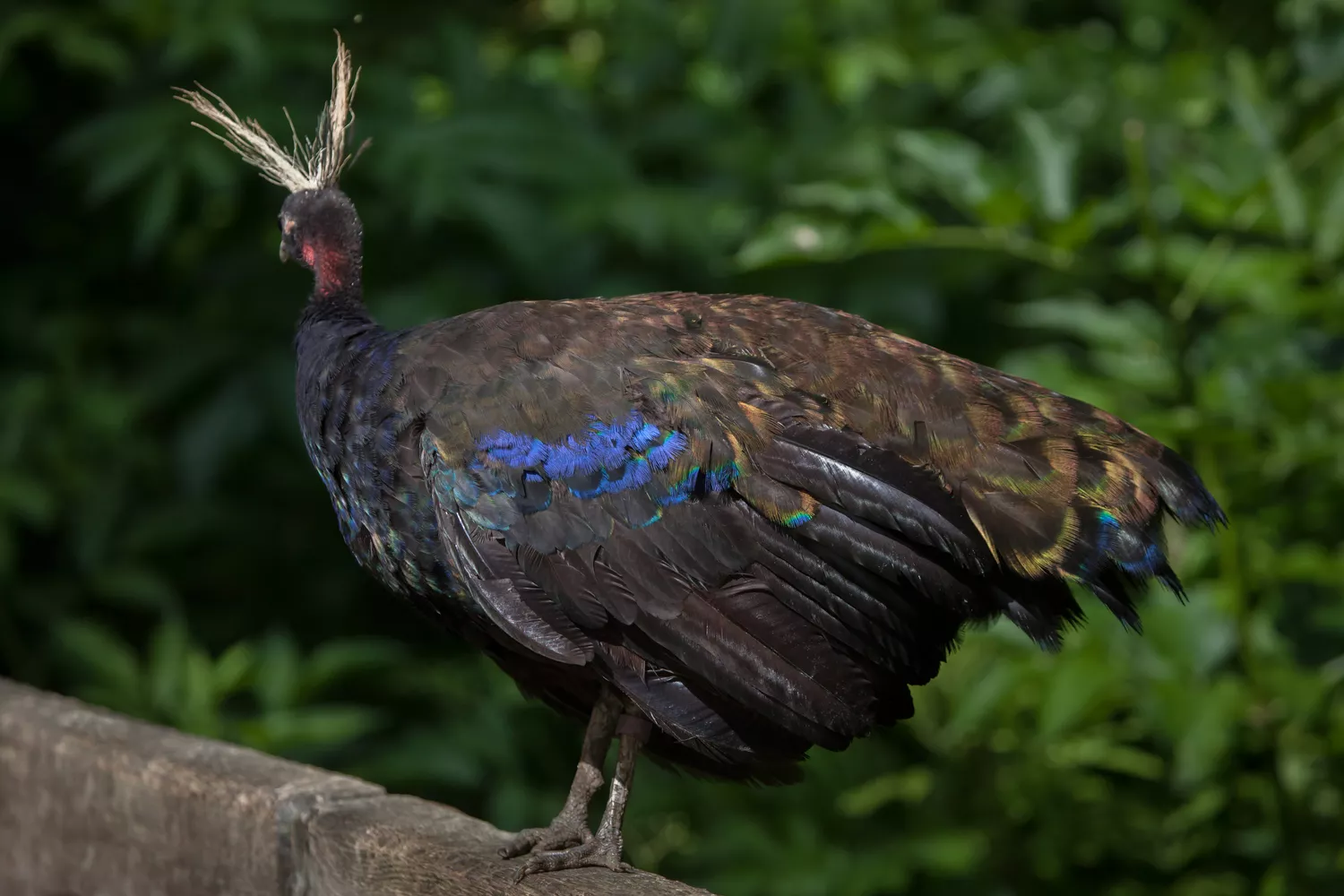
The Congo (Afropavo congensis) is a lesser-known species of peafowl. Native to the Democratic Republic of Congo, the bird is considered vulnerable due to its decreasing population.8 Males’ plumage is a brilliant deep blue with tinges of green and violet, while females are predominantly brown and green with black abdomens. Unlike other peafowl species, Congo peacocks are smaller and have short tail feathers, which they also fan out during mating rituals.
-
Can peacocks live in cold climates?
Although they’re made for warmth, peacocks can adapt to chilly temperatures so long as they have shelter from the elements. They need protection from strong winds and freezing temperatures to survive cold climates. Exposure to extreme temperatures can reduce a peacock’s lifespan.
-
How long do peacocks live?
Indian blue peafowl live for 10 to 25 years in the wild and in captivity. In Asia, their main natural predators are jungle cats, wild dogs, and mongooses. Elsewhere, raccoons, coyotes, wolves, and even domesticated dogs prey on them.
-
Why do peacocks dance in the rain?
Peacocks’ mating season coincides with the monsoons in their native India. The animal doesn’t “dance” because or as a result of rain; it simply carries out its mating ritual in the wet season, around May.
-
What do peacock vocalizations mean?
Different peacock vocalizations mean different things. The birds might let out an innocent squawk when entering their habitat to announce their presence or sound a loud alarm to warn others of predators. Peacocks are especially vocal during mating season, and their mating call sounds like a high-pitched hooting.
Why This Matters to Treehugger
Understanding the needs and behaviors of our fellow creatures is key to protecting biodiversity and habitat conservation. We hope the more we learn about amazing species like peafowl, the more motivated we’ll all be to help protect the forests and shrublands they call home.



